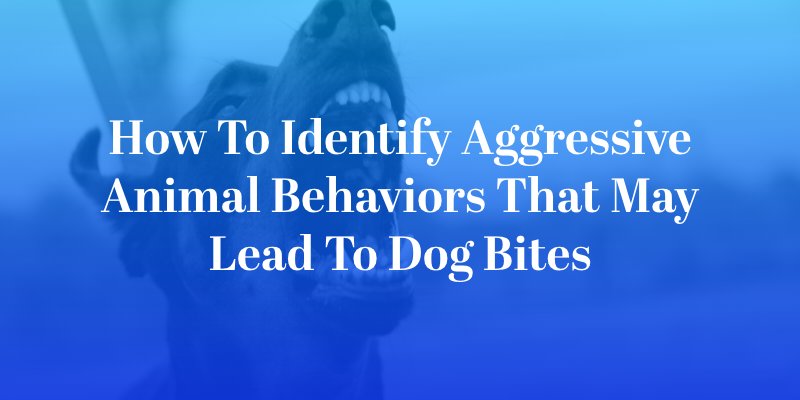
A dog can attack when it is least expected, causing serious, permanent and even fatal injuries. These incidents may seem out of the blue, but in many cases, there are warning signs that can be used to predict a dog bite injury. Being able to identify and correctly react to aggressive animal behaviors could allow you to avoid a dog attack. Make sure to speak with an experienced San Antonio dog bite lawyer for legal guidance if you are injured from a dog bite attack.
Common Warning Signs Before a Dog Attack
Dogs and many other animals typically show warning signs prior to attacking. While every case is unique, any of the following behavioral signs should be viewed as red flags for a possible aggressive incident:
- Stiffening: the animal’s body becoming stiff, tense or rigid
- Raised hackles: the fur on the back of the dog’s neck standing up
- Growling: low, guttural noises emanating from the dog
- Snarling: curling its lips back to show its teeth
- Barking: especially deep, threatening barks
- Eye contact: maintaining intense, steady eye contact
- Ears pinned back: ears that are flat to the dog’s head indicate fear or aggression
- Rigid tail: a high, rigid or stiff tail can indicate hostility
- Guarding: an animal defending food, toys or puppies can be triggered to attack
- Lunging: quick forward motions toward a person or animal
- Muzzle punching: tapping or hitting someone with the dog’s nose
- Mouthing: grabbing something with the mouth without applying pressure
- Biting and snapping: small or quick bites can come before a more serious attack
Whether or not a dog has previously known vicious tendencies, it is important to be wary if these signs are observed. Take immediate action to protect yourself and others from the dog as much as possible.
What to Do When Approached by an Aggressive Dog
A dog’s body language can say a lot about what it is feeling and the actions it is about to take. If you recognize behaviors from an animal that demonstrate that it is scared or aggressive, take steps to remove yourself from the situation.
Actions you can take include:
- Stay calm. Do not panic, scream or run away, as the dog may chase you and attack. Keep your arms loose at your sides and your body positioned to the side rather than directly facing the dog.
- Avoid combative behavior. Try to diffuse the situation by making yourself boring and nonthreatening. Do not try to touch or pet the dog. Do not look the dog in the eye.
- Speak calmly but firmly. In a clear, firm voice, tell the dog to “go home,” or “stay.” If you know the dog’s name, using it may help.
- Distract the dog. Try diverting the dog’s attention from you by throwing treats or toys at the dog. You can also throw other objects far away from you in the hopes that the dog will chase them.
- Back away slowly. Do not turn your back to the dog. Walk backward slowly until you are a safe distance away.
If a dog starts to attack, try to place something between you and the animal as a barrier, such as an object (e.g., car or bicycle), purse, bag, or jacket. Ball your hands into fists to prevent finger bites. If you fall to the ground, curl into a ball and cover your head and neck with your arms.
If you suffer a dog bite injury despite your best efforts to prevent an attack, discuss your legal options with an attorney. Contact a San Antonio injury lawyer for a free case evaluation.
